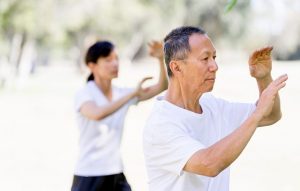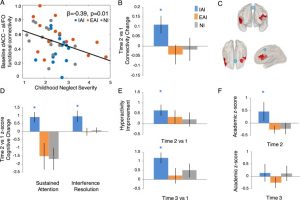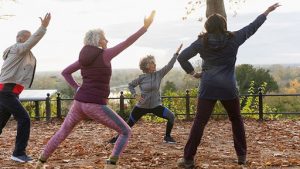Improve Children with Intellectual and Developmental Disabilities, their Caregivers, and the Agency with Mindfulness
By John M. de Castro, Ph.D.
“mindfulness practices could be helpful for these caregivers because they encourage a nonjudgmental interpretation of their child’s situation, and increased acceptance of their reality.” – Emily Nauman
There is a tremendous demand for caregiving in the US. It is estimated that over 65 million (29% of the adult population) provides care to someone who is ill, disabled or aged, averaging 20 hours per week spent caring for their loved ones. This caregiving comes at a cost exacting a tremendous toll on caregivers’ health and well-being. Caregiving has been associated with increased levels of depression and anxiety as well as higher use of psychoactive medications, poorer self-reported physical health, compromised immune function, and increased mortality.
Caring for children with intellectual and developmental disabilities can be particularly difficult. Developmental disabilities are a group of conditions due to an impairment in physical, learning, language, or behavior areas. These conditions begin during the developmental period, may impact day-to-day functioning, and usually last throughout a person’s lifetime. Recent estimates in the United States show that about one in six, or about 15%, of children aged 3 through 17 years have a one or more developmental disabilities.
The challenges of caring for a child with intellectual and developmental disabilities require that the caregiver be able to deal with stress, to regulate their own emotions, and to be sensitive and attentive to the child. These skills are exactly those that are developed in mindfulness training. It improves the psychological and physiological responses to stress. It improves emotion regulation, it improves the ability to maintain attention and focus in the face of high levels of distraction, and can reduce burnout.
In today’s Research News article “Comparative Effectiveness of Caregiver Training in Mindfulness-Based Positive Behavior Support (MBPBS) and Positive Behavior Support (PBS) in a Randomized Controlled Trial.” (See summary below or view the full text of the study at: https://www.ncbi.nlm.nih.gov/pmc/articles/PMC7223775/) Singh and colleagues recruited caregivers from a home for children with intellectual and developmental disabilities. They were randomly assigned to receive either Mindfulness-Based Positive Behavior Support (MBPBS) of Positive Behavior Support (PBS). The interventions were for 10 weeks and consisted of “an 8-h day on the first day of week 1 of training, followed by daily practice for 4 weeks. . . a second part included five 8-h days (i.e., 40 h) during week 5, followed by daily practice for 4 weeks. . . and third part was again an 8-h day on the first day of week 10, followed by daily practice for the rest of the week.” During the next 30 weeks data were collected. The caregivers were measured before and after training for compassion satisfaction, compassion fatigue, perceived stress, professional quality of life, and meditation practice. The children’s behavior was rated for aggressive events, staff injury, and peer injury. The agency was evaluated for the use of physical restraints, emergency medication, staffing, and cost effectiveness.
They found that both interventions produced significantly increased compassion satisfaction, and decreased perceived and traumatic stress, and burnout for the caregivers. The Mindfulness-Based Positive Behavior Support (MBPBS) group, however, had significantly greater improvements than the Positive Behavior Support (PBS) group. Similar results were found for the children’s behavior with both treatments producing significant decreases with aggression, staff injuries, and peer injuries. Once again, the mindfulness group had significantly superior results. For the agency outcomes Mindfulness-Based Positive Behavior Support (MBPBS) produced significantly reduced use of physical restraints, emergency medication, and one-on-one staffing. In addition, the mindfulness treatment had significantly greater cost effectiveness.
These are very encouraging results that demonstrate that Mindfulness-Based Positive Behavior Support (MBPBS) is highly effective in improving the situation for staff, children, and the agency in an institution for children with intellectual and developmental disabilities. It increased
caregivers’ well-being and the children’s behavior, and decreased the strains on the agency. Amazingly, the mindfulness-based treatment was even more cost-effective.
So, improve children with intellectual and developmental disabilities, their caregivers, and the agency with mindfulness.
“the greater effects associated with mindfulness techniques may be due to “the immediacy of physiologic relaxation responses incurred in mindfulness practice, including strengthened attention to bodily sensations, and less reliance on rumination or other automatic emotions.” – Summer Allen
CMCS – Center for Mindfulness and Contemplative Studies
This and other Contemplative Studies posts are also available on Google+ https://plus.google.com/106784388191201299496/posts and on Twitter @MindfulResearch
Study Summary
Singh, N. N., Lancioni, G. E., Medvedev, O. N., Myers, R. E., Chan, J., McPherson, C. L., Jackman, M. M., & Kim, E. (2020). Comparative Effectiveness of Caregiver Training in Mindfulness-Based Positive Behavior Support (MBPBS) and Positive Behavior Support (PBS) in a Randomized Controlled Trial. Mindfulness, 11(1), 99–111. https://doi.org/10.1007/s12671-018-0895-2
Abstract
Caregivers of individuals with intellectual and developmental disabilities are often stressed due to the demands of the job, including the nature and severity of challenging behaviors of the clients, work conditions, degree of management support for the staff, and the demands of implementing some interventions under adverse conditions. Mindfulness-Based Positive Behavior Support (MBPBS) and PBS alone have been shown to be effective in assisting caregivers to better manage the challenging behaviors of clients with intellectual and developmental disabilities. The aim of the present study was to undertake a head-to-head assessment of the effectiveness of MBPBS and PBS alone in a 40-week randomized controlled trial. Of the 123 caregivers who met inclusion criteria, 60 were randomly assigned to MBPBS and 63 to PBS alone, with 59 completing the trial in the MBPBS condition and 57 in the PBS alone condition. Results showed both interventions to be effective, but the caregiver, client, and agency outcomes for MBPBS were uniformly superior to those of PBS alone condition. In addition, the MBPBS training was substantially more cost-effective than the PBS alone training. The present results add to the evidence base for the effectiveness of MBPBS and, if independently replicated, could provide an integrative health care approach in the field of intellectual and developmental disabilities.
https://www.ncbi.nlm.nih.gov/pmc/articles/PMC7223775/









